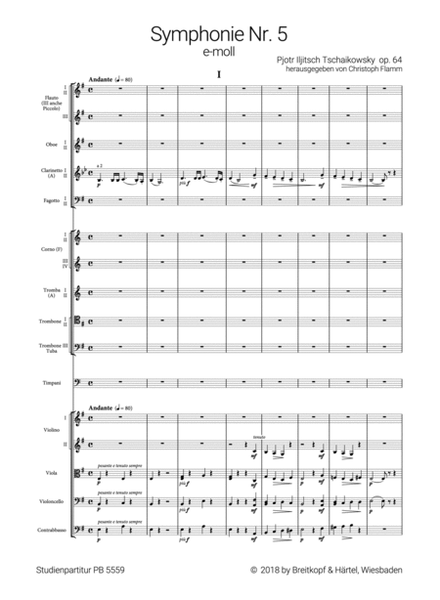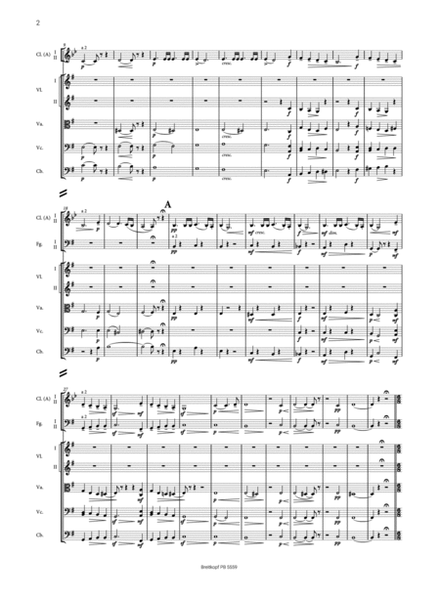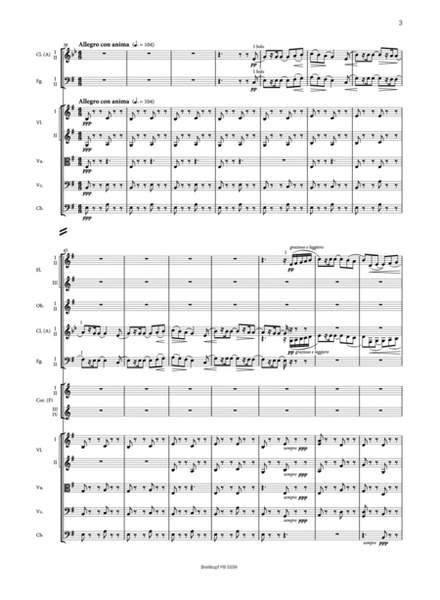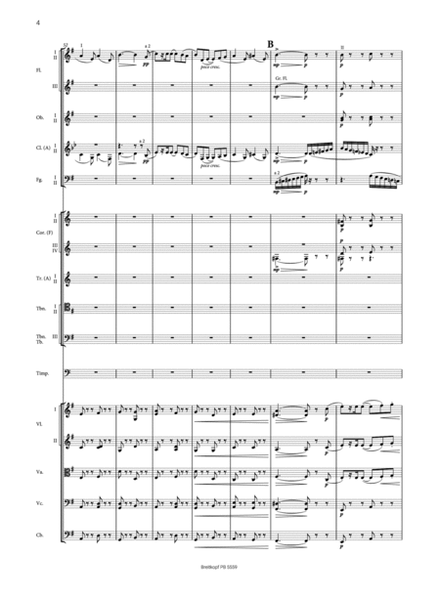
Happy Present Meet

Tchaikovsky Symphony No.5 in E minor Op.64 (Miniature Score)
Urtext edited by Christoph Flamm
[orch] Duration: 50
3(picc)2.2.2 – 4.2.3.1 – timp.(cym ad lib.) – str
Tchaikovsky’s “Hamburg Symphony” in the Urtext
Like Hamlet Overture, originating at about the same time, Tchaikovsky's 5th symphony, composed in 1888, focuses on the human existential question: To be or not to be - triumph over fate or triumph of fate? The per aspera ad astra dramaturgy underlying the symphony culminates in triumphant certainty. If Tchaikovsky was initially euphoric, then severe self-doubts befell him after he conducted the premiere in St. Petersburg. These doubts demonstrably led him to make interpretative changes for the Hamburg performance in 1889, including a cut in the finale. Only with the extremely positive response to this performance did his doubts dispel. Nevertheless, Tchaikovsky himself never again conducted the 5th symphony. It was only posthumously established in the repertoire through Arthur Nikisch's commitment. The new edition's textual criticism takes into account besides the autograph and first edition also the first edition's orchestral parts, together with the piano arrangement produced from the autograph by Sergei Taneyev. In addition to thoroughly clarifying dynamics and articulation, the source comparison also corrected many errors and solved problematical passages, such as, for instance, the trombone entry in m. 372 of the finale. Considered, moreover, for the first time has been the composer's doubts about his work and its ambiguities, frequently successfully suppressed in the history of its performance and reception. Tchaikovsky's conductor's copy is unfortunately lost, hence his alterations made for the Hamburg performance are not precisely known. They have survived only indirectly through remarks that Willem Mengelberg left to posterity, for which he could draw on Tchaikovsky's conductor's score and oral references by the composer's brother Modest. So, anyone wishing to deal seriously with the work's certainties will not be able to do so in the future without having also to deal with its uncertainties.
Tchaikovsky's "Hamburg Symphony" in the Urtext.
거의 같은 시기에 작곡된 햄릿 서곡과 마찬가지로 차이콥스키의 5번 교향곡은 1888년에 작곡되었으며 인간의 실존적 질문인 존재 여부에 대한 질문에 초점을 맞춥니다. 교향곡의 기초가 되는 Per Aspera ad astra 극작법은 승리의 확신으로 정점에 이릅니다. 차이코프스키가 처음에 기분이 좋았다면, 상트페테르부르크에서 초연을 지휘한 후 심각한 자기 회의가 그에게 닥쳤습니다. 이러한 의심으로 인해 그는 1889년 함부르크 공연에서 피날레 컷을 포함하여 해석을 변경하게 되었습니다. 이 공연에 대한 매우 긍정적인 반응이 있은 후에야 그의 의심은 사라졌습니다. 그럼에도 불구하고 차이코프스키 자신은 다시는 5번 교향곡을 지휘하지 않았습니다. 이 곡은 사후에 Arthur Nikisch의 헌신을 통해 레퍼토리에 확립되었습니다. 새 판의 텍스트 비평은 사인과 초판 외에도 초판의 오케스트라 부분과 Sergei Taneyev의 자필로 제작된 피아노 편곡도 고려합니다. 다이나믹스와 아티큘레이션을 철저하게 명확하게 하는 것 외에도 소스 비교를 통해 많은 오류를 수정하고 m의 트롬본 항목과 같은 문제가 있는 부분을 해결했습니다. 결승전 372화. 더욱이 처음으로 그의 작품에 대한 작곡가의 의구심과 그 모호함이 고려되었는데, 이 의심은 작품의 연주와 수용의 역사에서 자주 성공적으로 억제되었습니다. 불행하게도 차이코프스키의 지휘자의 사본은 유실되었기 때문에 함부르크 공연을 위해 그가 변경한 부분은 정확하게 알려져 있지 않습니다. 이 곡들은 차이코프스키 지휘자의 악보와 작곡가의 형제인 모데스트의 구두 참고 자료를 참고하여 빌렘 멩겔베르그가 후세에 남긴 발언을 통해 간접적으로만 살아남았습니다. 따라서 작품의 확실성을 진지하게 다루고자 하는 사람은 작품의 불확실성을 다루지 않고서는 미래에 그렇게 할 수 없을 것입니다.
원문에 있는 차이코프스키의 "함부르크 교향곡".
작곡가 Tchaikovsky, Peter Iljitsch
에디터 Flamm, Christoph




Tchaikovsky Piano Concerto No.1 in Bb minor Op.23 for Miniature Score
Mozart Symphony No.25 in G minor K.183 (Full Score)
Tchaikovsky Symphony No.6 in B minor Op.74 for Miniature Score
[클루토] 엽서 - 베토벤 but first, coffee (흰색, 주황색)
[클루토] 엽서 - 차이코프스키 but first, coffee (흰색, 핑크)
[클루토] 엽서 - 브람스 but first, coffee (흰색,곤색,갈색)
Notes - Smetana Green Cover (Pocket Size)
[클루토] 스티커 - STARBACHS (3PCS, 원형)